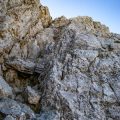Understanding the Different Types of Hiking Boots
When it comes to hiking in the United States, choosing the right boots can make or break your adventure. American trails vary from dusty desert paths and rocky mountain routes to lush forest tracks. To match your footwear to these unique terrains, its important to know the main categories of hiking boots available. Here’s a breakdown to help you find what fits your journey best.
Main Categories of Hiking Boots
| Type | Best For | Main Features |
|---|---|---|
| Trail Shoes | Day hikes, easy to moderate terrain, well-maintained trails | Lightweight, flexible, low-cut design, great for speed and comfort |
| Hiking Boots | Longer day hikes, rougher trails, light backpacking | Mid- or high-cut, more ankle support, sturdier sole than trail shoes |
| Backpacking Boots | Multi-day trips, heavy packs, rugged or uneven terrain | High-cut for maximum ankle support, durable materials, stiffer soles for stability and protection |
| Mountaineering Boots | Snowy conditions, alpine climbing, glaciers | Insulated, compatible with crampons, very stiff and supportive for technical climbs |
Choosing Based on American Terrain
- Desert Trails (like in Arizona or Utah): Breathable trail shoes or lightweight hiking boots work well.
- Mountain Trails (Rockies or Appalachians): Opt for sturdy hiking or backpacking boots with good grip and ankle support.
- Pine Forests (Pacific Northwest): Waterproof hiking boots are a smart choice because of muddy and wet conditions.
- Sandy Paths (California Coast): Trail shoes with good ventilation keep your feet cool and comfortable.
- Sierra Nevada & Colorado High Country: Consider backpacking or even mountaineering boots if tackling snowfields or rocky passes.
The Importance of Matching Your Boots to the Trail
No matter where you hike in America—from the dusty Grand Canyon to the misty Smoky Mountains—having the right type of boot gives you better traction, reduces fatigue, and helps prevent injuries. Take time to think about where youll be hiking most often and pick a pair that fits both your feet and your favorite trails.
2. Key Features to Look for in Quality Hiking Boots
Choosing the right hiking boots is all about understanding what features matter most, especially when you’re heading out on American trails that range from the sun-baked deserts of Arizona to the muddy paths of the Pacific Northwest. Here’s a breakdown of the essential features every hiker should consider:
Material Matters
The material of your hiking boots affects their durability, weight, and breathability. Common materials include:
| Material | Pros | Cons | Best For |
|---|---|---|---|
| Leather (Full-grain) | Very durable, water-resistant, supportive | Heavier, needs breaking in | Rocky Mountains, rugged trails |
| Synthetic (Nylon, Polyester) | Lighter, dries quickly, less expensive | Less durable, not as water-resistant | Paved or well-maintained trails |
| Split-grain Leather & Synthetic Mix | Lighter than full leather, more breathable | Moderate durability and water resistance | Mild climates and mixed terrain |
Perfect Fit for Comfort and Safety
Your boots should feel snug but not tight. Make sure there’s enough room to wiggle your toes, and check for any rubbing or pressure points that could cause blisters. Try them on with hiking socks and walk around the store if possible.
Ankle Support: Protecting Your Step
If you’re tackling rocky trails like those in the Rockies or uneven paths along the Appalachian Trail, ankle support is crucial. High-cut boots provide better support and protection against twists or sprains, while low-cut styles are lighter and suitable for easy trails.
Water Resistance: Stay Dry Across America’s Varied Climates
No one likes wet feet! Look for boots with waterproof membranes like Gore-Tex for rainy hikes in Oregon or snowy treks in Colorado. However, if you hike mostly in dry areas like Utah’s red rock country, breathable boots may be more comfortable.
| Feature | Benefit | Where It Helps Most |
|---|---|---|
| Waterproof Membrane (e.g., Gore-Tex) | Keeps feet dry in rain or snow | Pacific Northwest, Rockies in spring/fall/winter |
| No Waterproof Lining (Breathable Mesh) | Lighter and cooler for hot weather hikes | Desert Southwest, summer hikes anywhere in the U.S. |
Tread & Grip: Tackle Any Terrain With Confidence
The grip on your boots comes from the tread pattern and sole material. Deep lugs help with traction on muddy or loose surfaces (think Appalachian mud or Sierra Nevada scree), while a sticky rubber outsole is great for rocky scrambles.
Main Takeaway:
Selecting hiking boots with the right combination of material, fit, water resistance, ankle support, and grip ensures you’ll be ready for any adventure—whether you’re climbing high in Colorado or wandering through leafy New England forests.

3. Sizing and Fit: Making Sure Your Boots Feel Just Right
Getting the right size and fit for your hiking boots is key to having a great experience on American trails, whether you’re exploring the Rockies or wandering along the Appalachian Trail. Let’s dive into some tips and tricks that are especially helpful for American hikers.
Understanding American Sizing
Hiking boots in the U.S. typically follow standard American shoe sizing, which can differ from European or UK sizes. Make sure to check both men’s and women’s sizing charts, as they sometimes overlap but may have different widths.
| U.S. Men’s Size | U.S. Women’s Size | EU Size |
|---|---|---|
| 7 | 8.5 | 40 |
| 8 | 9.5 | 41 |
| 9 | 10.5 | 42-43 |
| 10 | 11.5 | 44 |
| 11 | 12.5 | 45-46 |
Trouble with Conversion?
If you’re unsure about your size, most outdoor stores in America have foot measuring devices (Brannock Devices) or staff ready to help you find your perfect fit.
American Foot Shapes and Boot Widths
A lot of American hikers have wider feet compared to other regions, so brands often offer wide (“W” or “EE”) options. If you have high arches or flat feet, look for boots with removable insoles so you can add custom orthotics if needed.
| Foot Shape/Need | Sizing Tip |
|---|---|
| Narrow Feet | Select “N” or “B” width boots; consider lacing techniques for snug fit. |
| Wide Feet | Look for “W” or “EE” width options; try on boots at end of day when feet are swollen. |
| High Arches/Flat Feet | Choose boots with removable insoles for custom support. |
Sock Choices: The All-American Way
The type of socks you wear can really affect how your boots fit. Most American hikers prefer cushioned wool or synthetic hiking socks that wick away moisture—especially popular brands like Smartwool, Darn Tough, or REI Co-op.
- Cotton socks are not recommended; they hold moisture and can cause blisters.
- Try on boots with the same socks you’ll wear on the trail for a true-to-life fit.
- If you hike in colder areas (like Colorado or Washington), consider thicker socks and size up if needed.
Regional Hiking Culture & Preferences
The way Americans hike can influence boot choices and sizing:
- PCT & West Coast Trails: Ultralight gear is trendy, so many choose lighter trail runners with a snug fit.
- Appalachian Trail & East Coast: Wet weather means waterproof boots are favored, often sized up slightly to accommodate thick socks.
- Southeast & Desert Regions: Breathable mesh boots or shoes are preferred due to heat; ensure there’s enough toe room to prevent rubbing during long descents.
Your Perfect Fit Checklist:
- Your toes should wiggle comfortably inside the boot—no pinching!
- You should have about a thumb’s width between your longest toe and the front of the boot.
- The heel should stay put when walking uphill—no slipping allowed!
- No hot spots after 15 minutes of walking in-store? You’ve likely found a winner!
Sizing and fit aren’t just about numbers—they’re about feeling confident and comfortable as you take on America’s stunning hiking trails.
4. American Trail Environments: Matching Boots to Your Adventure
When it comes to hiking in the U.S., trails can take you from scorching deserts to alpine peaks, dense forests, or breezy coastal paths. Each environment has its own unique challenges, so picking the right hiking boots for your adventure is essential. Here’s how to match your boots to some of the most popular American trail types.
Desert Trails
Hiking in places like Arizona’s Grand Canyon or Utah’s red rock country means dry heat, loose sand, and rocky terrain. You’ll want lightweight, breathable boots that keep your feet cool but also offer enough protection against sharp rocks and cactus spines.
Recommended Features:
- Breathable mesh uppers
- Good ankle support (mid-cut)
- Tough outsoles for grip on slickrock
- Sandy-color options to reflect sunlight
Alpine & Mountain Trails
The Rockies, Sierras, and Appalachian highlands can throw snow, cold temps, and steep climbs at you. For these rugged adventures, stability and insulation are key.
Recommended Features:
- Waterproof materials (GORE-TEX or similar)
- High-cut for ankle protection
- Stiff midsoles for rocky ground
- Insulation for chilly mornings or snowfields
Forest Trails
Whether you’re exploring the Pacific Northwest’s lush rainforests or Vermont’s green woods, expect muddy paths, roots, and occasional stream crossings.
Recommended Features:
- Water-resistant or waterproof uppers
- Aggressive tread patterns for grip on mud and roots
- Comfortable cushioning for long miles
- Lighter weight for agility on winding paths
Coastal Hikes
The U.S. has stunning coastal trails along the Pacific and Atlantic shores. Sand, saltwater, and uneven rocks are common here—so your boots should be ready.
Recommended Features:
- Quick-drying materials
- Low to mid-cut for flexibility over sandy dunes or boardwalks
- Corrosion-resistant eyelets (for salt exposure)
- Siped soles for traction on wet rocks
Quick Reference Table: Best Boot Types by Trail Environment
| Trail Type | Main Challenges | Best Boot Features |
|---|---|---|
| Desert | Heat, sand, sharp rocks | Lightweight, breathable mesh, solid grip soles |
| Alpine/Mountain | Scree, cold temps, snow/ice | Waterproof, insulated, high-cut support, stiff midsoles |
| Forest | Mud, roots, streams | Aggressive tread, water resistance, comfort cushioning |
| Coastal | Sand, saltwater, slippery rocks | Quick-dry fabric, flexible cuts, corrosion-resistant hardware |
Your Adventure Awaits!
No matter where your next American hike takes you—from sunbaked deserts to misty forest trails—choosing boots tailored to the terrain can make all the difference. Use this guide to step confidently onto any trail in the U.S., knowing your footwear has your back (and feet).
5. Top American Brands and Where to Shop
If you’re gearing up to hit America’s incredible trails, it pays to know which hiking boot brands are trusted by seasoned hikers across the country. Here’s a look at popular U.S.-based brands, where you can find them, and tips for making sure your new boots are the right fit before you head out on your next adventure.
Trusted American Hiking Boot Brands
| Brand | Known For | Best For |
|---|---|---|
| Merrell | Comfort, versatility, great value | Day hikes, light backpacking |
| Keen | Wide toe boxes, durability | All-day comfort, rugged terrain |
| Danner | Classic style, premium leather boots | Long-distance treks, durability lovers |
| Salomon (North American division) | Athletic fit, innovative design | Trail running, fastpacking, wet conditions |
| The North Face | Reliable all-rounders, weather protection | Varied terrains, all-season hiking |
| L.L.Bean | Maine-made heritage boots, waterproofing | Casual hiking, tradition seekers |
Where to Buy Your Next Pair of Hiking Boots in the U.S.
Popular Online Retailers:
- REI Co-op: The gold standard for outdoor gear. They offer a wide selection of top brands and a generous return policy—plus member perks if you join the co-op.
- Zappos: Free shipping and returns make it easy to try on multiple pairs at home.
- Backcountry: Known for expert customer service and frequent sales on premium hiking boots.
- Amazon: Convenient for quick shipping and finding deals across many brands.
- L.L.Bean & Danner Official Sites: Shop directly from the brand for full selections and exclusive models.
Local Outdoor Stores:
- Your Local REI Store: Try on different models with expert staff help. Many locations also have rock ramps or incline platforms to test boots’ grip and comfort.
- Cabela’s & Bass Pro Shops: Huge selection of boots for every type of trail—from casual walks to backcountry expeditions.
- Specialty Outdoor Boutiques: Check out local gear shops in cities near major hiking destinations (like Denver, Seattle, Asheville) for regional favorites and personalized advice.
- Shoe Fitters or Running Stores: Some carry high-quality hiking boots and offer custom fitting services.
Tips: Try Before You Buy!
- Go late in the day: Your feet swell throughout the day—just like they will on a hike. This ensures a better fit.
- Bring your trail socks: Wear the same socks you’ll use hiking when trying on boots.
- Add insoles if needed: If you use special insoles or orthotics, bring them along to test in new boots.
- Lace up fully: Walk around the store (or your house) for at least 10-15 minutes. Test inclines if available!
- Check the return policy: Especially when buying online; many stores allow returns even after light indoor wear.


